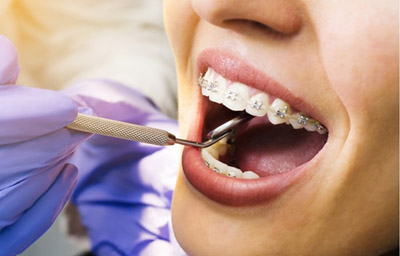The 30-Second Trick For Causey Orthodontics
Table of ContentsThe Greatest Guide To Causey OrthodonticsThe Ultimate Guide To Causey OrthodonticsUnknown Facts About Causey OrthodonticsSome Known Incorrect Statements About Causey Orthodontics Causey Orthodontics Can Be Fun For Everyone
Disregarding occlusal connections, it was common to eliminate teeth for a variety of dental concerns, such as malalignment or overcrowding. The concept of an undamaged dentition was not commonly appreciated in those days, making bite connections seem unimportant. In the late 1800s, the concept of occlusion was important for creating trusted prosthetic replacement teeth.As these concepts of prosthetic occlusion proceeded, it became an indispensable tool for dentistry. It was in 1890 that the work and effect of Dr. Edwards H. Angle began to be really felt, with his contribution to modern-day orthodontics especially noteworthy. Focused on prosthodontics, he showed in Pennsylvania and Minnesota before guiding his focus towards dental occlusion and the therapies needed to preserve it as a regular problem, thus ending up being recognized as the "daddy of contemporary orthodontics".

The idea of suitable occlusion, as proposed by Angle and incorporated into a category system, made it possible for a shift towards dealing with malocclusion, which is any type of variance from normal occlusion. Having a complete collection of teeth on both arches was highly searched for in orthodontic therapy because of the need for exact partnerships in between them.
5 Easy Facts About Causey Orthodontics Shown
As occlusion came to be the essential priority, face proportions and visual appeals were disregarded - orthodontist near me. To accomplish ideal occlusals without utilizing exterior forces, Angle postulated that having best occlusion was the very best method to obtain optimum face visual appeals. With the passing away of time, it became rather obvious that even an outstanding occlusion was not suitable when thought about from a visual perspective
Charles Tweed in America and Raymond Begg in Australia (that both studied under Angle) re-introduced dental care removal right into orthodontics throughout the 1940s and 1950s so they can improve facial esthetics while also guaranteeing much better stability worrying occlusal partnerships. In the postwar duration, cephalometric radiography begun to be made use of by orthodontists for determining changes in tooth and jaw position brought on by growth and therapy. It came to be obvious that orthodontic therapy could change mandibular growth, causing the development of practical jaw orthopedics in Europe and extraoral force measures in the US. These days, both useful devices and extraoral tools are applied around the globe with the aim of modifying development patterns and types. Going after true, or at least improved, jaw partnerships had actually come to be the primary objective of therapy by the mid-20th century.
Not known Facts About Causey Orthodontics
 The American Journal of Orthodontics was produced for this purpose in 1915; prior to it, there were no scientific purposes to comply with, neither any specific classification system and brackets that did not have features. Up until the mid-1970s, dental braces were made by wrapping metal around each tooth. With advancements in adhesives, it came to be possible to rather bond steel braces to the teeth.
The American Journal of Orthodontics was produced for this purpose in 1915; prior to it, there were no scientific purposes to comply with, neither any specific classification system and brackets that did not have features. Up until the mid-1970s, dental braces were made by wrapping metal around each tooth. With advancements in adhesives, it came to be possible to rather bond steel braces to the teeth.This has actually had purposeful effects on orthodontic treatments that are administered on a regular basis, and these are: 1. Right interarchal partnerships 2. Proper crown angulation (pointer) 3.
The benefit of the layout depends on its bracket and archwire combination, which requires only marginal cord flexing from the orthodontist or medical professional (orthodontist services). It's appropriately named hereafter function: the angle of the port and density of the brace base eventually determine where each tooth is situated with little need for additional manipulation
The 9-Second Trick For Causey Orthodontics
Both of these systems employed the same brackets for each and every tooth and required the bending of an archwire in 3 planes for finding teeth in their desired placements, with these bends determining supreme positionings. When it pertains to orthodontic appliances, they are split right into two kinds: detachable and fixed. Detachable devices can be handled and off by the person as needed.

Therefore, practically all modern set home appliances can be considered variants on this edgewise home appliance system. Early 20th-century orthodontist Edward Angle made a major payment to the world of dental care. He produced four distinctive appliance systems that have actually been utilized as the basis for many orthodontic therapies today, barring a couple of exemptions.
The Main Principles Of Causey Orthodontics

The wire ended in a thread, and to relocate it onward, an adjustable nut was made use of, which enabled a boost in circumference. By ligation, each individual tooth was affixed to this extensive archwire (best orthodontist near me). As a result of its minimal variety of motion, Angle was incapable to accomplish precise tooth placing with an E-arch
These tubes held a soldered pin, which could be repositioned at each appointment in order to relocate them in location. Dubbed the "bone-growing device", this device was supposed to motivate healthier bone growth due to its possibility for transferring force straight to the origins. Nevertheless, implementing it verified frustrating in truth.